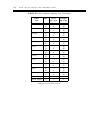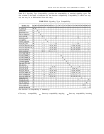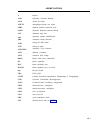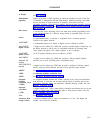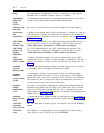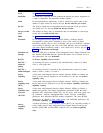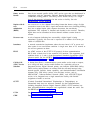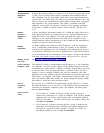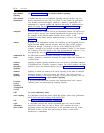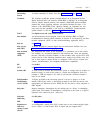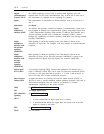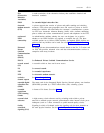
GL-2 GLOSSARY
analog
analog/digital-
facility test
circuit
(ADFTC)
arithmetic logic
unit (ALU)
asynchronous
data
transmission
AT&T ISDN
basic rate
interface (BRI)
AT&T ISDN
primary rate
interface
(ISDN-PRI)
AT&T
standardized
facility element
Automatic
Alternate
Routing (AAR)
automatic
identified
outward dialing
(AIOD)
automatic
number
identification
(ANI)
Automatic
Route Selection
(ARS)
AUTOVON
(Automatic
Voice Network)
AUTOVON
access
The representation of information by means of continuously variable physical
quantities such as amplitude, frequency, phase, or resistance.
A maintenance circuit resident in communications-system processor port carriers
for use in testing the hardware associated with modem pooling.
The area in a central processor that performs arithmetic and logic functions.
A method of transmitting data in which each character is preceded by a start bit
and followed by a stop bit, thus permitting data characters to be transmitted at
irregular intervals. Also called asynchronous transmission. See also synchronous
data transmission.
An AT&T implementation of the CCITT specification that describes the level 1,
level 2, and level 3 interfaces for ISDN-BRIs on AT&T products. See also
AT&T ISDN primary rate interface and ISDN basic rate interface.
An AT&T implementation of the CCITT specification that describes level 1,
level 2, and level 3 interfaces for ISDN-PRIs on AT&T products. See also
AT&T ISDN basic rate interface and ISDN primary rate interface.
A codeset-6 information element (IE) used to indicate which of the AT&T
standardized services or facilities is being requested or responded to. The ASF
element also specifies the kind of control associated with the facility. See also
codeset.
A feature that provides optimum routing for private-network calls by selecting,
in descending order of desirability, the best route available.
An arrangement whereby a communications system can provide automatic
number identification (ANI) data to a class-5 serving office to allow billing of
central-office (CO) trunk calls to individual system extensions. An AIOD data
link connects the class-5 serving office and the communications system that is
used by the CO to query the system for billing data.
The process of automatically identifying the calling party’s billing number and
transmitting that number from the caller’s local central office (CO) to another
point on or off the public network. The term ANI is sometimes used for the
billing number itself as well as for the process of identifying and transmitting that
number. See also ISDN SID-ANI.
A feature that provides optimum routing for public-network calls by selecting, in
descending order of desirability, the best route available. See also high-volume
tandem.
The U.S. Department of Defense private voice network. See also AUTOVON
access.
The capability of a communications system to interface with special military
voice circuits on the AUTOVON. See also AUTOVON.



